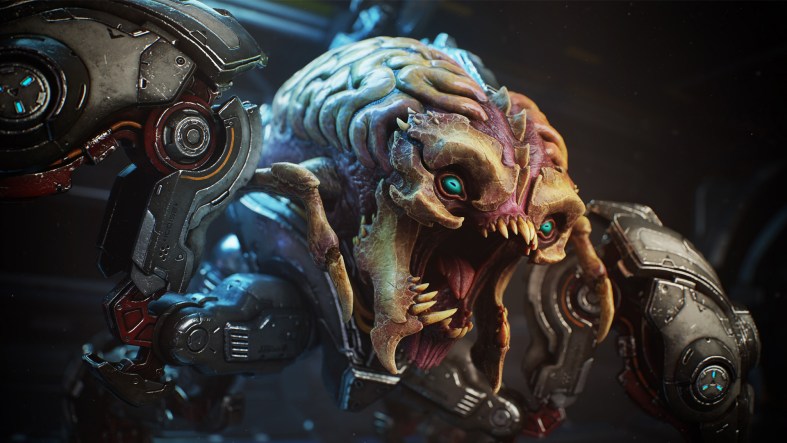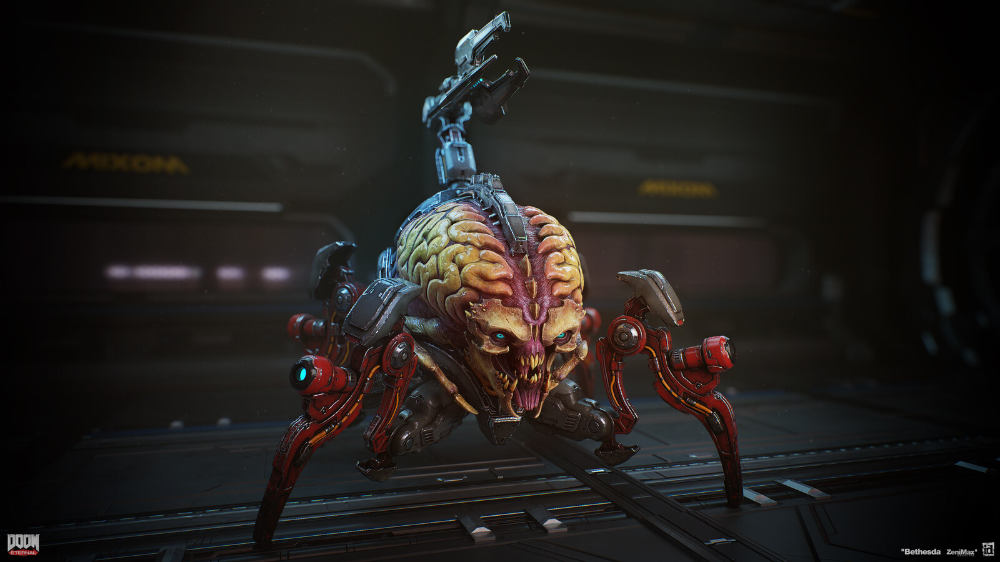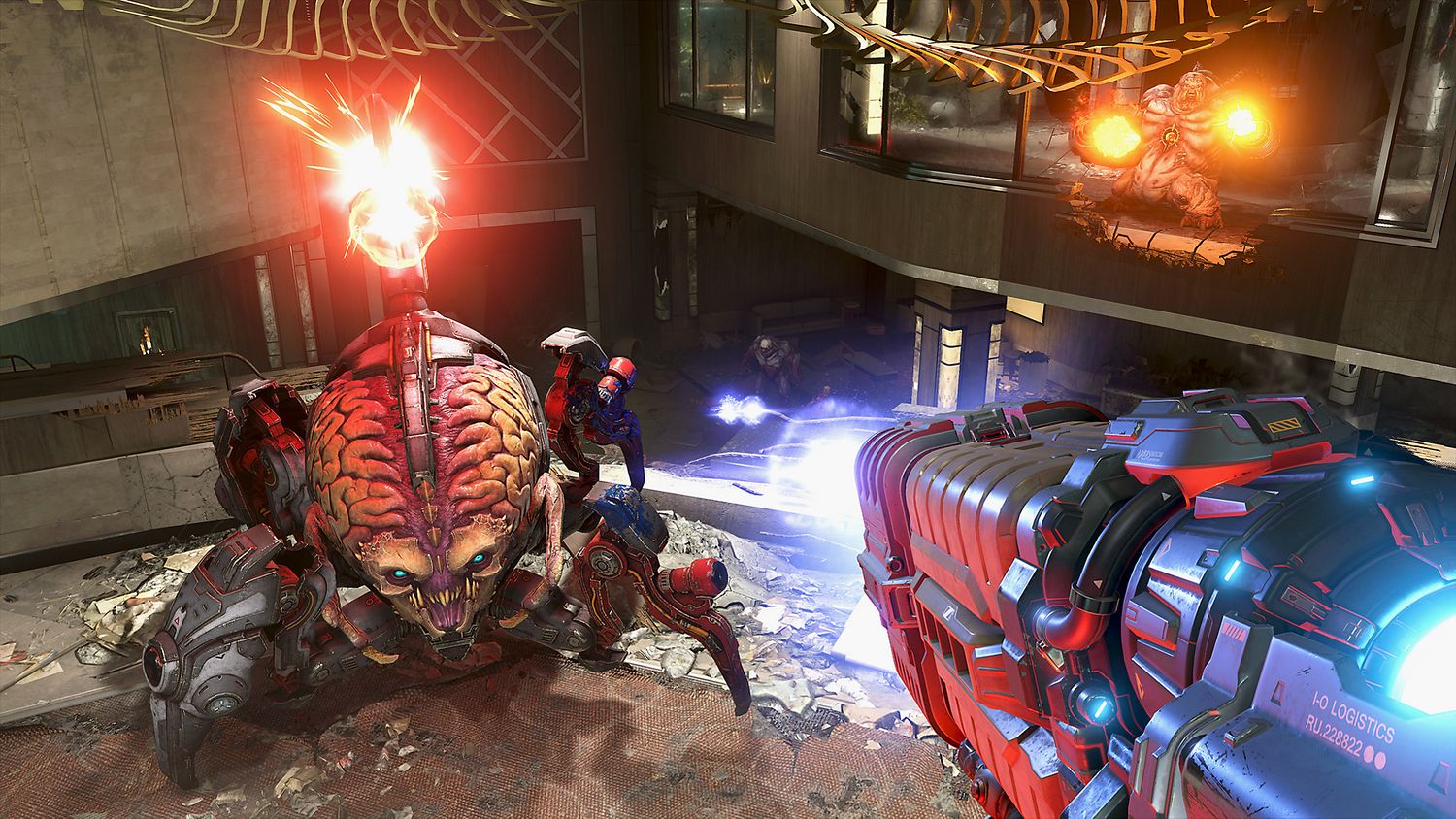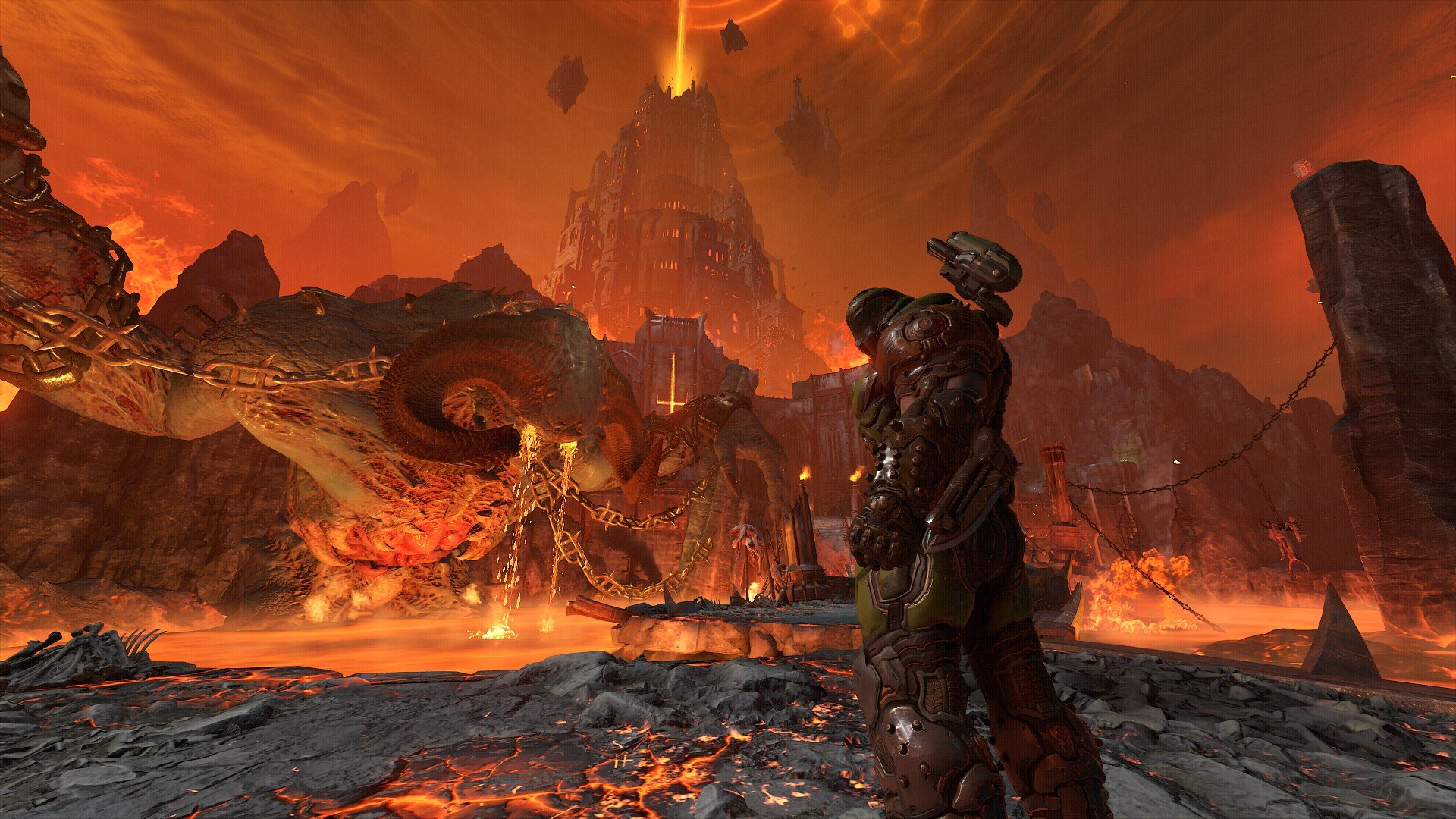‘Doom Eternal’ And The Hell Of Demonic Mechanical Spiders [Monster Mania]

Monster Mania is a monthly column celebrating the unique and varied monster designs in horror gaming.
Doom is one of those storied horror franchises that I hold so near and dear to my black heart that I have to stop myself from writing about its denizens of hell every other week. Doom‘s monsters are that iconic. Whether talking about the fiery skull screaming Lost Souls or the Mars red ball of teeth that is the Cacodemon, Doom’s demonic bestiary is filled with timeless designs. The secret demonic sauce that has separated Doom‘s brand of demons from its peers has always been Id Software’s pairing of memorable black metal aesthetics with distinctive combat roles, allowing monsters to serve a greater purpose than just hellish set dressing.
While these demons would undergo slight cosmetic changes over the years, there were rarely any drastic changes to their overall functionality. So when an unforgettable boss demon, such as the Spider Mastermind, was shrunk in size and demoted to a more common combatant in 2020’s Doom: Eternal, the decision was perplexing. But as it became apparent, Id’s redesigning a classic demon was for the better in this new, lighting-paced era of Doom.
And, after all, who was I to question these masters of hell?

Also Read: Rediscovering The Long-Forgotten ‘Omen’ Games
As if wading knee-deep into hell wasn’t bad enough, by the end of the original Doom, the Doom Slayer faces his most horrific demonic monstrosity yet: the Spider Mastermind. Spider Mastermind was a monolith of cybernetics and demonic arachnid bioengineering that towered over all the hordes of hell faced thus far. And, you know, if you can put a giant robotic spider in your game, why not?
Doom and its subsequent sequels would pit the player against the Spider Mastermind as an acute test of the player’s resolve. Strafing around an arena and duking it out with this screen-filling, chain gun-wielding monstrosity was overwhelming, given the monster’s immense size and ability to shred the Doom Slayer’s armor to bits. My arachnophobia aside, the Spider Mastermind was a wonderfully terrifying surprise at the end of a game filled with plenty of pant-shitting combat encounters.
While the Spider Mastermind would return in Doom 2016, by the time we get around to 2020’s Doom: Eternal, the notion of simply reincarnating the monster wouldn’t have done this storied boss baddie the acclaim it deserved. And rather than discard outright, Id Software did what any seasoned developer would do: They reinvented.
Also Read: Meet Your Maker: Doom Style Raiding Revealed
Enter Doom: Eternal, a sequel that was even more kinetically brutal than the Doom reboot four years earlier. To reinforce Doom’s greater emphasis on speed, its largest, screen-filling monster was given a miniature rendition in the form of the Arachotron.

The Spider Mastermind lived on in the very formidable Arachnotron, which isn’t technically a new demon, so to speak, as it could be found within Doom II. However, Doom: Eternal’s redesign gives the Arachnotron a lot more bite than it had previously. Created from the Spider Mastermind’s genetic code, Arachnotron shares aesthetic similarities in the form of a gargantuan fleshy spier brain that is housed atop cybernetic spider legs but now has a plasma turret fixed atop the back of its head, giving it a more scorpion-like resemblance.
First and foremost, Arachnotron’s ability to traverse environments has been reworked completely. Given the demon’s diminutive stature, Arachnotrons can now leapfrog around arenas, scurrying after the Doom Slayer and launching onto elevated platforms to pursue the player wherever they venture. The player’s introduction to the Arachnotron sees it climb down a banister made from meat at an early level, which serves to both startle and inform the player of its improved mobility.
Also Read: ‘The Outlast Trials’ Scared Me So Much That I Couldn’t Review It [Dodging Death]
Arachnotrons’ increased mobility means that while they may be smaller in stature, they are no less threatening, given their dynamic and unpredictable movements. This enables them to place more pressure on the player, as they are essentially a mobile tank that can quickly retreat if the player gets too close but can also attach themselves to ceilings to provide new combat angles.
Regarding their attacks, Arachnotron’s redesign arms them with a plasma cannon that dwindles the Doom Slayer’s shields before moving in for a devastating melee kill. Their ability to suppress the player while having no qualms about charging into the thick of things for melee nastiness makes them as versatile as they are deadly. Naturally, the player can undercut Arachnotron’s deadliness by destroying their plasma turret. A well-placed sticky grenade or rocket can destroy their turret. However, this will send them into a rage, as their only offensive means are now swiping the Doom Slayer with their thick cyborg legs.

While the Arachnotron’s massive fleshy brain is an easy enough target to pump rounds into, failing to prioritize the disabling of their plasma turret often results in the player scrambling for health and shield pickups. The Arachnotron’s size can also become problematic when facing clusters of demons. Their large stature can block the player’s shots from connecting with other demons, often resulting in the player being swarmed by mobs, while the Arachnotron retreats to an elevated platform, continually chipping away at their shield and health.
Also Read: Retro Survival Horror Inspired ‘Crow Country’ Gets New Trailer For Xbox [Video]
As formidable as the Arachnotrons are, it is fitting that they have one of my favorite and most satisfying glory kills of the new Doom era. When dealt enough damage to put them in a downed glory kill state, the Doom Slayer grabs one of the Arachnotron’s legs and buries it into their fleshy eye socket—demonic brutality at its finest.
The Arachnotron is near the top of my list among all the redesigns within the new Doom era. Rather than reworking this classic demon into something barely resembling its origins in Doom II, Id Software capitalized on the potential that, technically speaking, the original Arachnotron never could do due to technical limitations. The Arachnotron serves as a prime example of what makes each new Doom entry so exciting, as even if there are many familiar demonic faces, they have more than a few combat-oriented surprises up their many, many cybernetic limbs.
Categorized:Editorials

